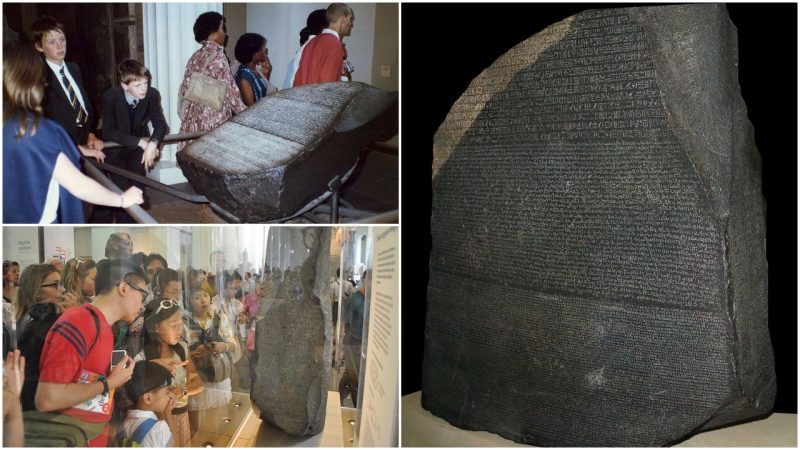One of the most treasured items at the British Museum is the Rosetta Stone, and the good news is now you don’t need to travel all the way to London to inspect it. The museum has brought the Rosetta Stone online with the first 3D scan version of the artifact, following a collaboration with Sketchfab.
This means that the prominent plate inscribed with hieroglyphs, but also some lines in Greek and Demotic, can be scrutinized at the touch of a mouse.
Museum advisor Daniel Pett says that the 3D scan of the Rosetta Stone is part of an effort to capture some of the museum’s essential pieces and make them available to a wider audience.
Apart from the Rosetta Stone, some 200 more artifacts are available online at Sketchfab. Anyone wishing to learn more about the Rosetta Stone by checking its 3D scan version can make use of accompanying audio explanations.
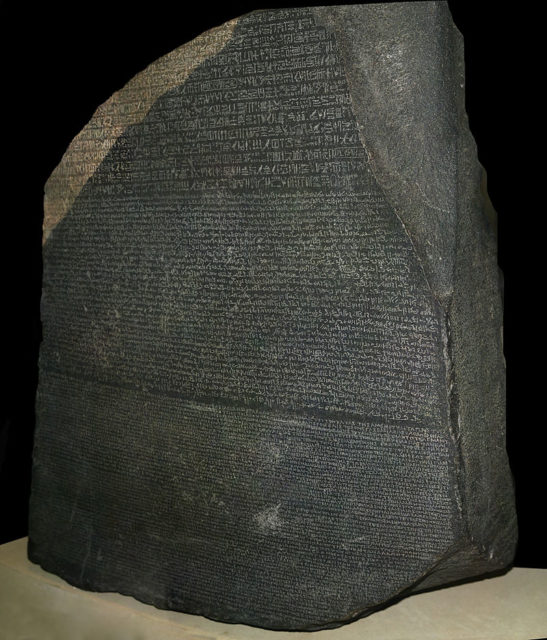
For a long time, the treasured Rosetta Stone was displayed without a protective case in the British Museum. Although museum officials disapproved of visitors touching the artifact, people would frequently trace a line of the inscriptions on the plate with their finger. This issue was resolved by placing the original beneath a protective glass case, and a replica displayed that visitors can still touch (probably still at the annoyance of any museum curator in the world).
The artifact was discovered by the French following their occupation of Egypt in 1799, a discovery deemed an accident by many. Weighing almost a ton, the plate is significant because it has been used to help decode the ancient Egyptian hieroglyphics, which over the course of many centuries presented a mystery to scholars.
Now the Rosetta Stone retains the status as one of the most important finds of the ancient world, but that was not the case when the plate was first inscribed in 196 BC. Back then, this artifact was only one of numerous copies of a decree passed by a council of priests. Furthermore, the decree was related to the royal appraisal of King Ptolemy V, the fifth ruler of Egypt’s Ptolemaic dynasty. As the ancient Egyptian civilization slowly but surely bacame lost to history, knowledge of Egyptian hieroglyphics was lost as well. At least until the Rosetta Stone was uncovered in 1799.

While scholars were quick enough to translate what was written in Greek and Demotic script, it took much more time to find the meaning behind the hieroglyphics on it, and an intricate anecdote relates to it.
It was the French prominent scholar of the 19th-century, Champollion, who managed to decode the puzzling ancient script. He realized the meaning of the sun symbol, that it matched with the Egyptian “ra” that denoted the sun. Also, “ra” built in the beginning of the name of the Egyptian deity of the sun, Ramses.
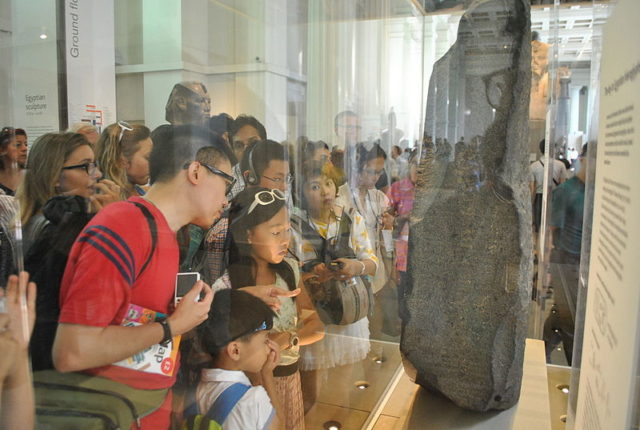
With a sudden realization that the hieroglyphics made a phonetic language, Champollion rushed to his brother, who worked at the Academy of Inscriptions and Belles-Lettres, saying, “I have it.” Supposedly, Champollion fainted with happiness. His discovery made the news in 1822, and a few years afterward he was designated the very first director of Louvre’s Egyptian Museum.
By the year the Rosetta Stone was deciphered, the piece had already occupied its spot in the British Museum for more than two decades. The museum would make a permanent residence of the artifact, except for a period of two years during World War One when the Rosetta Stone, along with a selection of other significant artifacts, was hidden some 50 feet underground in a tube station.
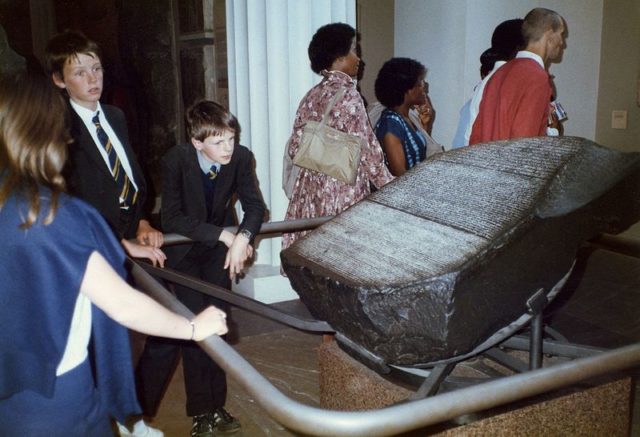
France got the honor to receive the Rosetta Stone for a single month in 1972 while marking the 150th jubilee of Champollion’s deciphering, and at that point, there were rumors that the artifact would remain in the possession of the Louvre. However, as the month finished, the French museum passed back the treasured artifact to the British museum.
Questions on who should keep the original Rosetta Stone were debated again in 2003 when Egypt sent out requests to return the artifact to its home country. The requests were all turned down by the British Museum, but an exact replica of the artifact was gifted by the British to Egypt in 2005.
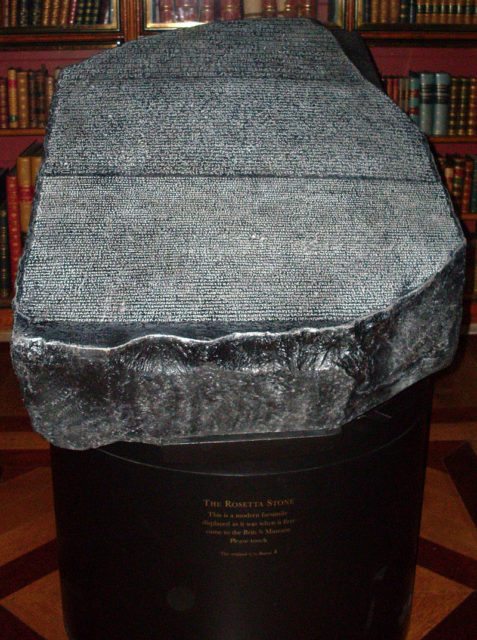
Thanks to the 3D scan version of the Rosetta Stone now available, people from any corner of the world can view and study the artifact. In total, 228 photographs compose the model, but additional images should improve the 3D version in future.
And if you are not stirred by ancient inscriptions, perhaps the available 360-degree view of the colossal marble bust of the Greek god Zeus, or the statue of Ramses II, the Younger Memnon, are two of the many more precious items you can still check while on Sketchfab.
